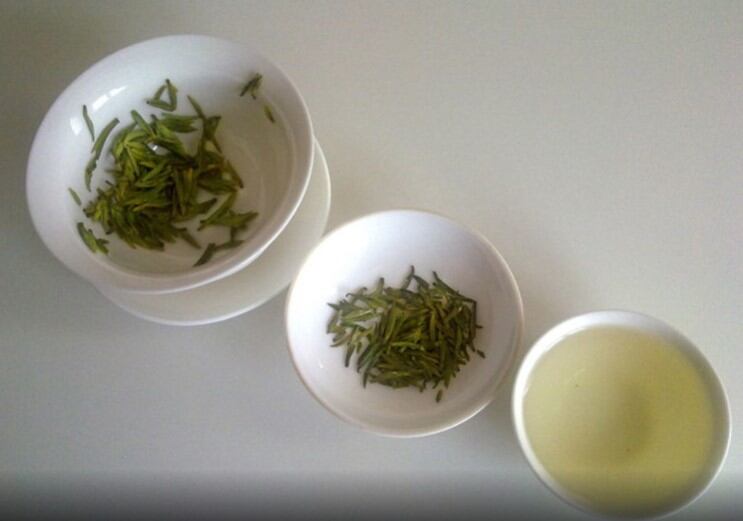The group demonstrates that a GTE added to chitosan, a sugar found in shellfish exoskeletons and marketed as a weight-loss supplement, creates a safe-to-eat barrier that kills norovirus and two bacterial types.
“In many cases, an edible film is in a product, but you are not aware of it,” explains Melvin Pascall, senior study author and professor of food science and technology at The Ohio State University.
“We don’t have to put that on the label since the material is edible. That’s another way in which we use packaging – and the consumer doesn’t have to know.”
Chitosan has proved useful for its dried film-forming ability and its inherent antimicrobial activity due to its low-cost and ability as a carrier for plant-based antimicrobial compounds.
However, chitosan has limited solubility in water, and to make film-forming solutions, it must be dissolved in an acid and blended with select materials that do not negatively affect chitosan’s antimicrobial activity.
Polyphenolic compounds such as catechins and polyphenols, found in GTEs have shown strong antiviral activities against foodborne viruses.
However, studies on this subject are few and far between with little to read on the use of dried edible films as carriers for plant-based compounds having antiviral efficacy.
Study details
The Ohio State University team began by dissolving GTE in chitosan film-forming solutions (FFS) and using it to prepare dried chitosan edible films. Here, the control was a GTE dissolved in deionised water (DW).
The FFS and the dried chitosan films with the GTE and the DW without chitosan were tested with the murine norovirus (MNV-1), and the bacteria Escherichia coli K12, and Listeria innocua.
Results revealed the DW containing 1, 1.5, and 2.5% aqueous GTE, significantly reduced MNV-1 plaques after 3-hour exposure. In a similar vein, FFS containing 2.5 and 5.0% GTE reduced MNV-1 counts, after 3-hour exposure.
The dried chitosan films with 5, 10, and 15% GTE were also effective against MNV-1 infectivity with a 24-hour incubation resulting in the 5 and 10% chitosan GTE films producing significant titre reductions.
The team also reported the chitosan films containing 15% GTE reduced MNV-1 plaques to undetectable levels in 24 hours with all chitosan GTE films reducing E. coli K12 and L. innocua populations to undetectable levels also after 24 hours.
“We had tested the chitosan by itself and it didn’t show much antimicrobial activity against the virus,” adds Dr Pascall.
“But when we added the green tea extract to chitosan, we saw that the film had antiviral properties – so we concluded the antiviral properties were coming from the green tea extract.”
In discussing the findings, the team highlighted the GTE’s catechins content with epigallocatechin gallate (EGCG) the predominant component.
“The EGCG and the other catechins can be oxidatively coupled to form dimers,” the study suggests.
“These polyphenolic catechin compounds, in their pure isolated forms, have been shown to contain varying antiviral efficacies.”
Mechanism of inactivation
The team goes on to propose a mechanism of inactivation the polyphenolic catechins in the GTE work to.
For the nonenveloped viruses, the team suggest that the interaction of the polyphenolic catechins with the viral capsid was responsible for the inactivation results obtained.
“For the enveloped viruses, the antiviral activity was due to the direct binding of the polyphenolic catechins to the fusion proteins or viral envelope glycoproteins.
“Therefore, the mechanisms responsible for the antiviral activity of GTE on MNV-1 in our study could have ranged from interaction with the virus protein capsid, interference with the viral attachment, to adsorption and/or interference with the viral replication,” the study puts forward.
EGCG and another catechin epicatechin gallate (ECG) are reportedly the most effective green tea catechins in terms of antibacterial activity. This was attributed to the presence of the galloyl functional groups in these catechins.
“A higher concentration of a natural antimicrobial might cause a large drop in the target organism, but at the same time it defeats the purpose of the food by adding an objectionable taste or odour,” says Dr Pascall.
“There is also the impact of the natural compound on the material itself – it may cause the film to become too brittle or sticky. These are things food scientists have to consider when using antimicrobial agents, especially those from natural sources.”
Source: International Journal of Food Science
Published online: doi.org/10.1155/2020/3941924
“Antimicrobial Activity of Chitosan-Based Films Enriched with Green Tea Extracts on Murine Norovirus, Escherichia coli, and Listeria innocua.”
Authors: Collins Amankwaah et al.



